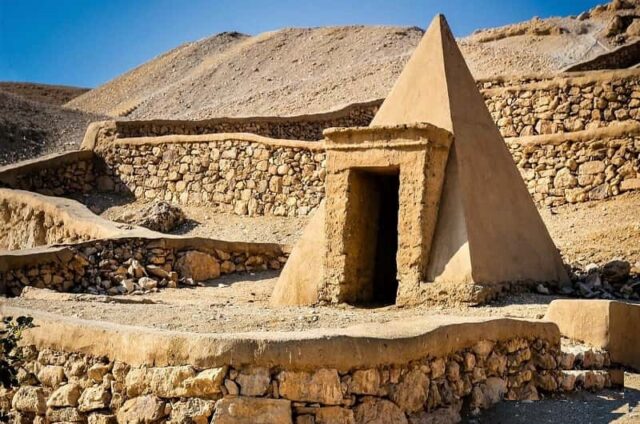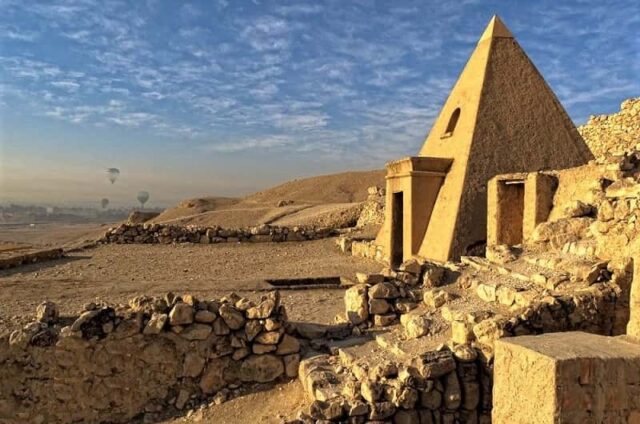Deir El-Medina
Overview
The ancient name of the settlement was Set-maat “Place of Truth”, and the workers living there were called “Servants of the Place of Truth”.

Residential Quarter
The residential area or workers’ village was located in the southeastern part of the old colony. It is set in a small natural amphitheater, a few steps from the Valley of the Kings to the south. The village was perhaps built away from the population to preserve secrecy given the sensitive nature of the work carried out in the royal tombs. At its peak, the community had approximately sixty-eight houses spread over a total area of 5,600 square meters.
The main road through the village may have been covered to protect the villagers from the intense glare and heat of the sun. Due to its location, the village is not thought to have provided a pleasant environment. The walled village reflects the shape of the narrow valley in which it’s situated. The village was abandoned circa 1110–1080 BCE during the reign of Ramesses XI (whose tomb was the last of the royal tombs built in the Valley of the Kings) due to increasing threats from tomb robbery, Libyan raids, and the instability of civil war.
A large proportion of the community, including women, could at least read and possibly write.
Workmen Huts
The term “workers’ huts” is a general term, and the actual function of these structures is still unknown. Many theories have been proposed, but one thing is certain: these huts were not homes. Perhaps they were probably used to store and prepare materials for the construction of the king’s tomb. First, two types of huts were built without a door. This worked according to the processing block of the material used for the construction of the grave and the visible thing that operates as a storage. The latter was built with a door and may have served as a “guardhouse”.

The Necropolis
The community of Deir el-Medina village built their tombs across the slopes of surrounding Theban Hills. The workmen could work on their tombs during their off days, and since they were amongst the best craftsmen in ancient Egypt who excavated and decorated royal tombs, their tombs are considered to be some of the most beautiful on the West Bank. There are four major cemetery areas; Eastern Cemetery, Ramesside Cemetery, Tombs of Saite Princesses, and Western Cemetery.



